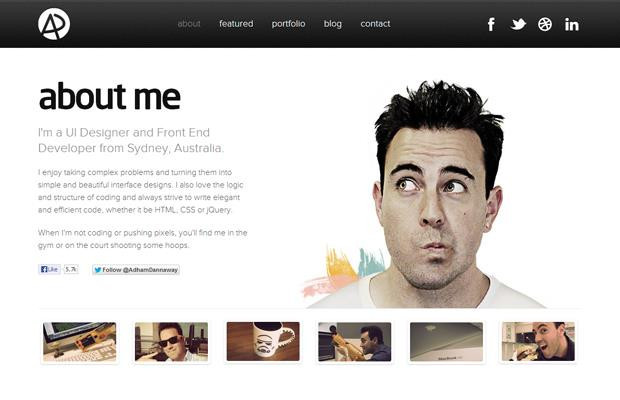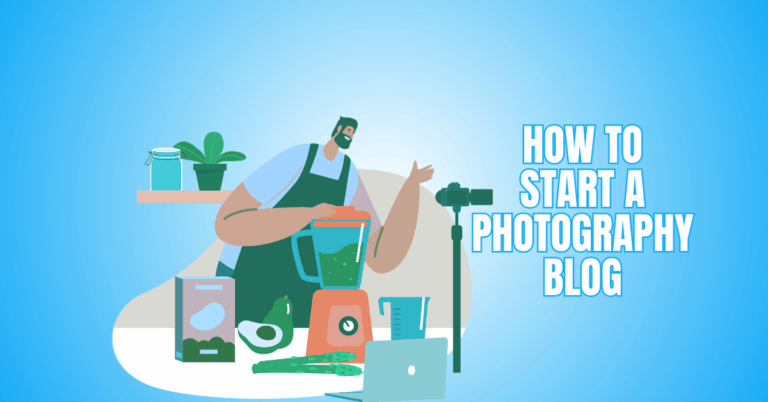How To Write Ad Copy That Sells
Writing ad copy that actually converts can be challenging, but it doesn’t have to be. In this guide, you’ll learn How To Write Ad Copy That Sells by connecting with your audience, highlighting benefits, and using persuasive techniques.
Whether you’re promoting a product, service, or affiliate offer, these strategies will help you craft compelling messages that grab attention, spark interest, and drive real action from readers.
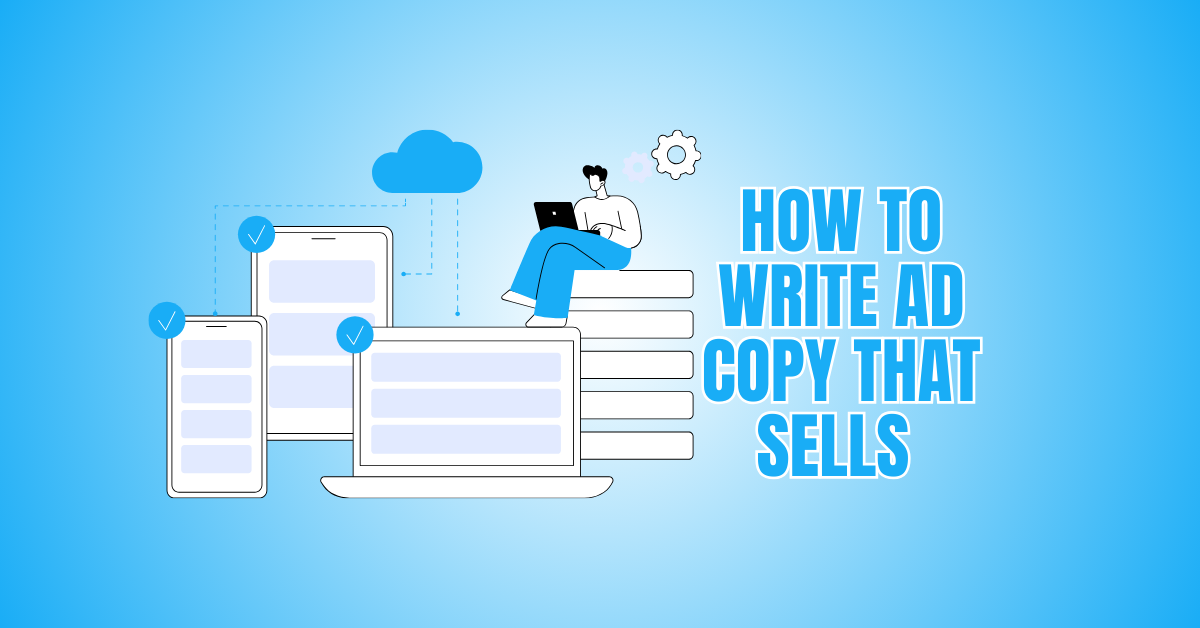
How To Write Ad Copy That Sells
1. Know Your Audience
You can’t persuade someone if you don’t know what they care about. Knowing your audience well is the first step to writing effective advertising text.
The process begins with research. Study demographics (age, income, gender) and psychographics (values, lifestyle, goals, frustrations).
Dig into online reviews, forums, and social media to find the exact words people use when they talk about their problems. Build a customer avatar—a single, detailed profile of your “ideal buyer.”
For instance, mothers who prioritize sustainability and safety may be your target market if you provide eco-friendly cleaning supplies. When you know who you’re writing for, your ad copy feels like a conversation, not a broadcast.
Key Points
- Research demographics and psychographics.
- Collect real phrases from your audience.
- Create a clear customer avatar.
- Write as if to one specific person.
2. Focus On Benefits Not On Features
Features tell what your product does. Benefits explain how it helps customers. The process is to list every feature, then ask, “So what?” until you reach the emotional payoff.
Example: “Vacuum weighs 5 pounds.” So what? “It’s easy to carry upstairs.” So what? “You can clean your whole home without straining your back.”
Want to Start Making Money Online?
Try My #1 Recommendation Program!
Customers don’t care about the technical detail—they care about what it means for them. Another example: “Phone with 128GB storage.”
Benefit? “Capture every memory without worrying about running out of space.” Always translate technical language into everyday benefits that make life easier or better.
Key Points
- List product features first.
- Ask “So what?” repeatedly.
- Uncover emotional outcomes.
- Sell the result, not the specs.
3. Craft Irresistible Headlines
Your headline is the gatekeeper. If it fails, no one will read the rest. The process starts with identifying your most substantial benefit, then turning it into a short, powerful statement.
Use proven formulas: “How to” headlines (“How to Double Your Sales in 30 Days”), list headlines (“5 Secrets to Glowing Skin”), or question headlines (“Tired of Wasting Money on Ads That Don’t Work?”).
Write at least 10 versions before choosing the best. Test different headlines against each other. For example, “Lose Weight Fast” is vague, but “Lose 10 Pounds in 14 Days Without Giving Up Pasta” is specific and persuasive. The correct headline can make your ad unstoppable.
Key Points
- Lead with the most significant benefit.
- Use proven headline templates.
- Write 10+ versions each time.
- Be specific and intriguing.
4. Use Emotional Triggers
People buy based on emotions, not logic. The process starts with identifying which feelings motivate your audience most—fear, desire, belonging, or urgency.
Then, weave that emotion into your copy. For example, a security system ad may use fear: “Don’t let your family face danger while you sleep.”
Want to Find Out How To Start Your Home-Based Business?
Try My #1 Recommendation Platform!
A luxury watch ad may use desire: “Own the watch that defines success.” Balance is key: overusing fear feels manipulative, while too much hype feels fake. Blend emotion with benefits and facts.
Example: “Over 10,000 parents trust this app to keep their kids safe online.” That combines emotion (fear of danger) with proof.
Key Points
- Match emotions to audience needs.
- Use fear, desire, or urgency carefully.
- Combine emotion with benefits.
- Support claims with proof.
5. Keep It Simple
Simplicity is power in ad copy. The process is to write your draft, then cut unnecessary words. Replace complex terms with simple ones.
Break long paragraphs into one or two lines. Aim for clarity, not cleverness. For example, instead of “Our cutting-edge hydration technology optimizes your body’s fluid balance,” write “Stay hydrated all day without extra effort.”
A child should be able to understand your message. Read it aloud—if it sounds confusing, rewrite. Simplicity ensures your audience gets the point instantly, even while scrolling. Remember, ads compete for attention; clear beats clever every single time.
Key Points
- Use plain, simple words.
- Break content into short lines.
- Edit ruthlessly for clarity.
- Test by reading aloud.
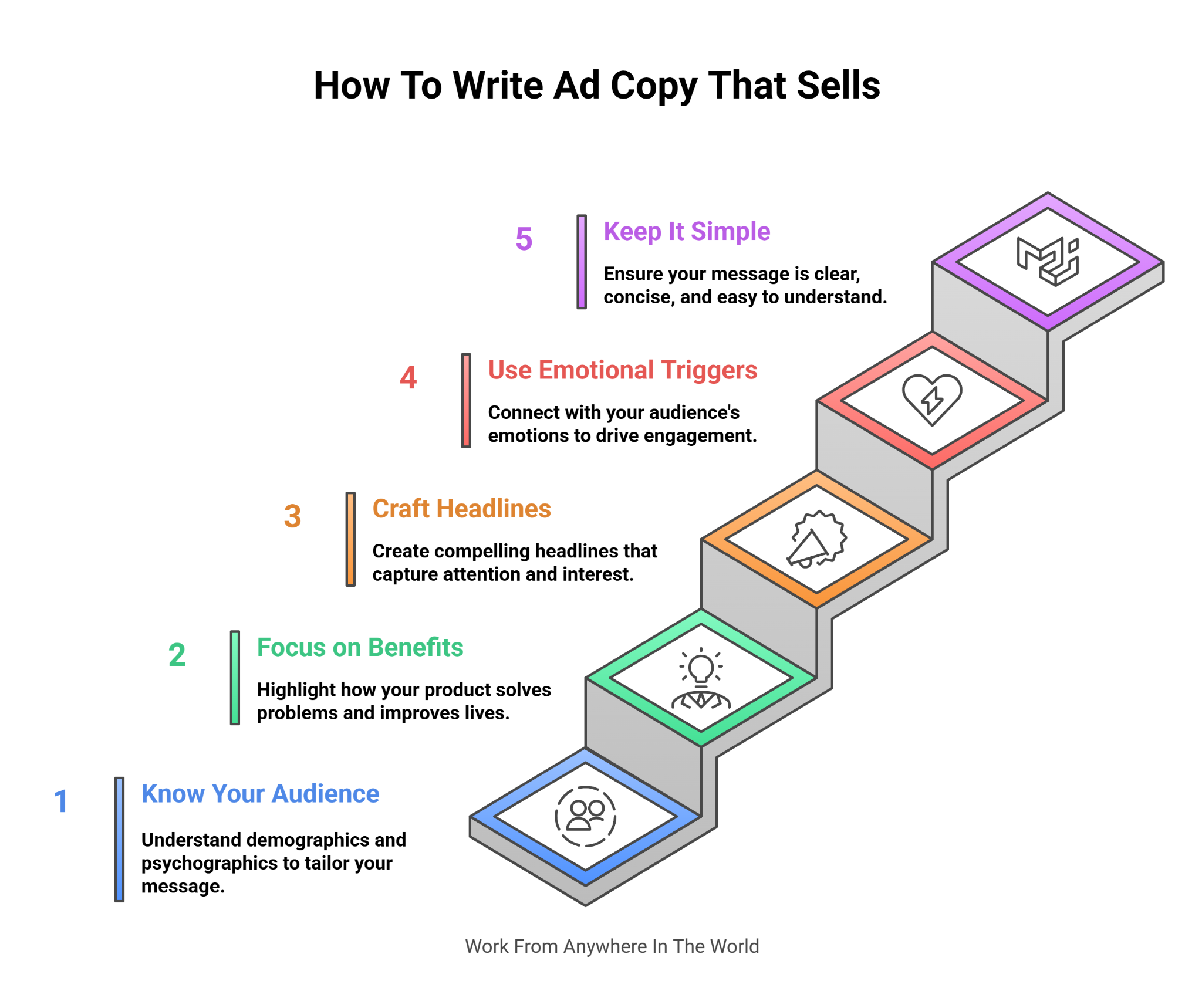
6. Create Curiosity
Curiosity drives clicks and engagement. The process is to create an information gap—reveal part of the answer but not the whole.
For example, instead of saying, “This course teaches time management,” say, “Most people waste 2 hours every day without knowing it—fix it with this simple system.”
The reader now wants to learn how. Another example: “Discover the one mistake 90% of new investors make.” That headline pushes people to click to avoid being part of the 90%.
Consistently deliver on the promise after the click; misleading curiosity creates disappointment and distrust.
Key Points
- Create an information gap.
- Tease solutions, don’t reveal all.
- Use curiosity-driven headlines.
- Consistently deliver on the promise.
7. Social Proof
Customers trust others more than they trust businesses. Social proof reduces skepticism. The process is to collect testimonials, reviews, and success stories from real customers.
Use specifics. For example, instead of “Great product,” showcase: “I doubled my sales within 3 months using this tool.” Numbers and results add weight.
Are You Tired Of Scams?
Want to Start Making Money Online?
Highlight how many people already trust you: “Over 50,000 businesses use our platform.” Social proof can also be logos, awards, or influencer endorsements.
Place these near your CTA or at points where customers may hesitate. Proof reassures them they’re making the right choice.
Key Points
- Collect detailed testimonials.
- Share numbers and results.
- Show logos, awards, or endorsements.
- Place proof near decision points.
8. Use Persuasive Language
Words have power, and using strong words can determine whether a reader chooses to click “Buy Now” or scrolls past. Using action words like “discover,” “unlock,” or “transform” triggers curiosity and emotions.
Emotional appeal works best when tied to the customer’s desires. For example, instead of saying “Our planner has 200 pages”, say “Stay organized every day with 200 pages designed to simplify your life.”
The second option paints a picture of benefit. Test different persuasive phrases to see which resonates with your audience. Excellent ad copy turns features into feelings customers want to experience.
Key Points
- Use strong action verbs
- Appeal to emotions
- Turn features into benefits
- Test persuasive phrases
9. End With A Strong Call-To-Action
Your ad copy should guide the reader to take action. A strong call-to-action (CTA) removes hesitation and makes the next step clear. Instead of writing “Learn more,” use “Start your journey today” or “Grab your planner before it sells out.”
Urgency and clarity make people act. You can also test variations like “Join 5,000+ happy customers now” for more impact.
The CTA should always align with the ad’s goal—whether that’s to buy, sign up, or click. Remember, even the best copy fails without a clear push toward action.
Key Points
- Make the CTA clear
- Add urgency or scarcity
- Use benefit-driven words
- Test different CTA versions
10. Test, Tweak, And Improve
Even the most skilled copywriters rarely nail perfect ad copy on their first attempt. That’s why testing is so crucial. Running experiments helps you understand what resonates most with your audience.
Start small by A/B testing different headlines, calls-to-action (CTAs), and emotional hooks. Pay attention to performance data, such as click-through rates, engagement, and conversions.
Use these insights to tweak your messaging, tone, or structure. Over time, continuous refinement ensures your ads become stronger and more profitable. Remember, optimization is an ongoing process, not a one-time task.
Key Points
- Test different versions of your copy (A/B testing).
- Focus on headlines, CTAs, and emotional angles.
- Measure results with key metrics like CTR and conversions.
- Refine regularly for long-term improvement.
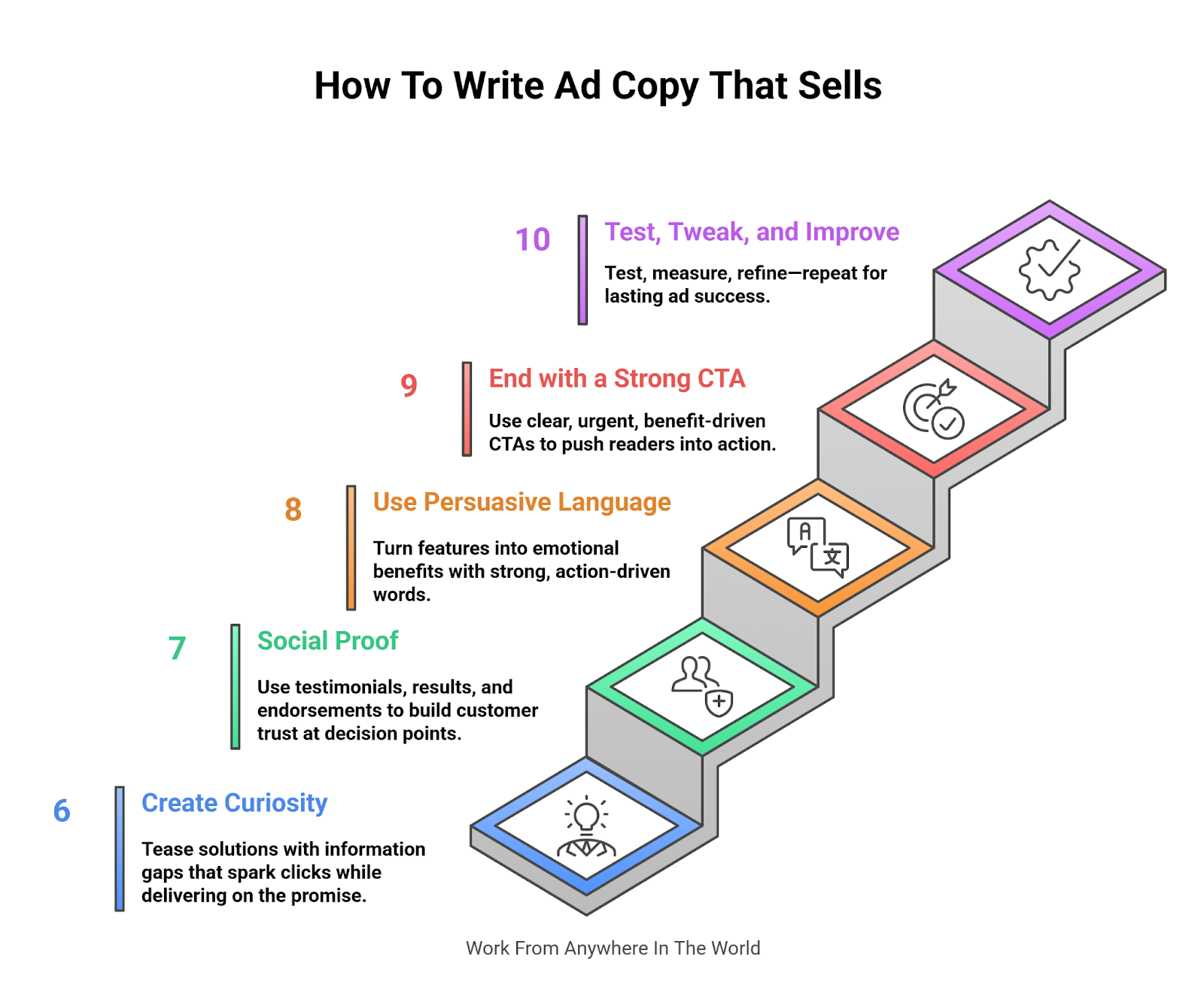
When I started writing ad copy, I struggled with getting the right message across. That’s when I discovered Wealthy Affiliate.
Their training not only helped me write ad copy that sells but also showed me how to monetize my skills. If you’re looking for practical training, you can check out WA here.
Common Mistakes to Avoid When Writing Ad Copy
Even experienced writers make errors that reduce conversions. This guide highlights the most common mistakes in ad copywriting and shows how to avoid them, helping your ads engage and sell better.
1. Writing For Everyone
Attempting to write for everyone is one of the most common errors made while writing ad text. When you try to appeal to all people at once, the message becomes watered down and fails to connect with anyone.
Customers want to feel like the product or service is made for them specifically. For example, saying “Our shoes are great for everyone” is vague and forgettable.
A stronger approach is “Busy moms love our shoes because they’re lightweight, stylish, and perfect for long days on your feet.” See the difference? Focus on one audience segment and write directly to them.
Key Points
- Avoid generic language
- Define a clear audience
- Address pain points directly
- Write like you’re speaking to one person
2. Focusing Only On Features
Another mistake is writing copy that lists only features without explaining the benefits behind them. Features describe what something is, but benefits explain why it matters to the customer.
People don’t buy features—they buy outcomes and feelings. For example, saying “This blender has 10 speed settings” is just a feature.
Want To Learn How To Create Your Own Website And Online Business?
Try My #1 Recommendation Training And Hosting Platform!
A benefit-focused version would be “Make smoothies, soups, and sauces exactly how you like them with 10 easy speed settings.”
The second version connects the feature to a real-life benefit. Always ask: how does this feature make the customer’s life better, easier, or more enjoyable?
Key Points
- Don’t stop at features
- Translate into benefits
- Show life improvements
- Connect features to desires
3. Overloading With Information
Some ad copywriters make the mistake of cramming too much information into one ad. Long, heavy paragraphs filled with technical terms or endless details overwhelm the reader and cause them to skip the ad entirely.
People skim online content, so ad copy must be simple, clear, and focused. For example, instead of explaining every ingredient of a skincare cream, focus on the result: “Get smoother, younger-looking skin in weeks with our dermatologist-approved formula.”
Readers should immediately understand the value without working hard to process it. The rule of thumb: keep your copy digestible and scannable.
Key Points
- Avoid heavy paragraphs
- Keep sentences short
- Use bullets or highlights
- Focus on one message
4. Ignoring Emotions
A mistake many copywriters make is focusing only on logic and data while ignoring emotions. While facts are essential, people make buying decisions emotionally first, then justify with logic.
If your copy doesn’t tap into feelings, it feels flat and unmemorable. For example, “Our insurance saves you $50 per year” is logical but boring.
A stronger, emotional version would be “Rest easy knowing your family is protected while saving $50 each year.” The second version appeals to the emotion of security. Always ask yourself: what feeling do I want the reader to experience?
Key Points
- Don’t be overly logical
- Appeal to emotions
- Use relatable feelings
- Inspire excitement or relief
5. Weak Or Missing Call-To-Action
Ad copy without a strong call-to-action (CTA) is like telling a story without an ending. If you don’t guide the reader toward the next step, they won’t act—even if they like your product.
A weak CTA like “Click here” isn’t enough. Instead, use benefit-driven and urgent CTAs. For example, “Order today to get free shipping and start enjoying fresher mornings tomorrow.”
This kind of CTA is clear, persuasive, and tells the reader what they gain by acting now. Always remember, strong CTAs close the deal, while weak ones lose the customer’s interest.
Key Points
- Always add a CTA
- Use action words
- Add urgency or scarcity
- Keep it benefit-focused
6. Being Too Salesy
Being overly pushy is another mistake in ad copywriting. Readers don’t want to feel pressured; they want to feel understood.
Overusing hype phrases like “Best deal ever!” or “You can’t live without this!” makes your copy sound desperate and fake. Instead, build trust by highlighting real value and solving genuine problems.
For example, instead of “Buy now before it’s too late!” you could say “Simplify your daily routine with a planner designed to keep you stress-free.” This approach feels authentic and helpful rather than aggressive. The goal is to persuade, not pressure.
Key Points
- Avoid a pushy tone
- Show value, not pressure
- Use helpful language
- Build trust over hype
7. Forgetting To Test And Revise
A huge mistake is assuming the first draft of your ad copy is the final version. Successful marketers constantly test different versions of their copy to find what resonates most with their audience.
For example, one headline might say “Save time with our planner,” while another says “Finally, get back 2 hours every day.” Testing reveals which one gets more clicks or conversions.
Skipping this step means missing out on potential sales. Copywriting is never truly finished—it’s an ongoing process of testing, learning, and refining to maximize results.
Key Points
- Don’t publish and forget
- Run A/B tests
- Compare different styles
- Revise for better results

Examples of Winning Ad Copy (In Depth)
1. Nike – “Just Do It”
Nike’s famous slogan is simple, memorable, and powerful. It doesn’t talk about shoes, materials, or pricing. Instead, it taps directly into human motivation and ambition. “Just Do It” inspires action—it speaks to athletes and non-athletes alike who want to overcome challenges.
The brilliance lies in its universal emotional appeal. Nike’s campaigns show real people achieving greatness, and the copy ties into those stories.
This ad copy works because it empowers the audience rather than selling directly. Lesson: sometimes less is more. A few strong words can carry deep emotional weight and connect instantly.
Key Takeaways
- Focus on inspiration, not product details
- Keep it short and memorable
- Appeal to universal desires
- Make the audience feel empowered
2. Apple iPhone – “If it’s not an iPhone, it’s not an iPhone”
Apple uses exclusivity and brand authority to make its copy stand out. This line isn’t descriptive; it’s declarative. It suggests that no other phone can compare, creating a sense of superiority.
Apple’s marketing often avoids technical jargon in favour of simplicity and emotion. Instead of talking about specs, it focuses on identity and belonging—owning an iPhone means being part of something special.
This ad copy works because it positions the product as the standard. The lesson: when you have a strong brand, focus on uniqueness and exclusivity to create demand.
Key Takeaways
- Position your product as the standard
- Use confidence in wording
- Emphasize identity and belonging
- Keep the copy simple but bold
3. Dollar Shave Club – “Our blades are f**ing great.”*
Dollar Shave Club broke through with humour and boldness. The copy is casual, direct, and unexpected in the shaving industry, which was previously filled with serious, polished ads.
By using humour and a conversational tone, they connected with younger audiences who were tired of overpriced razors.
This copy works because it’s authentic, disruptive, and memorable. It also clearly communicates value without overexplaining.
Lesson: know your audience and don’t be afraid to stand out with humour or bold language if it matches your brand personality.
Key Takeaways
- Use humour to stand out
- Be bold and authentic
- Speak your audience’s language
- Don’t overcomplicate value messaging
4. M&M’s – “Melts in your mouth, not in your hand.”
This line has been around for decades and is still effective. It highlights a unique selling point (USP) in a catchy way. Instead of saying “M&M’s are tasty,” it shows a practical benefit: you can enjoy chocolate without a mess.
It’s simple, visual, and easy to remember. People instantly picture the experience. This works because it combines functionality with enjoyment.
Lesson: When writing ad copy, focus on one clear differentiator and phrase it in a catchy, benefit-driven way that customers won’t forget.
Key Takeaways
- Highlight a strong USP
- Make it visual and memorable
- Keep it simple and benefit-driven
- Show functionality with enjoyment
5. De Beers – “A diamond is forever.”
This slogan didn’t just sell jewelry—it created an entire cultural tradition around engagement rings. By connecting diamonds with eternal love, De Beers made its product synonymous with marriage and commitment.
Notice how the copy doesn’t mention price, cut, or clarity. Instead, it links the product to timeless emotion. It’s powerful because it goes beyond the product and reshapes consumer behaviour.
Lesson: If you can tie your product to values, traditions, or emotions bigger than the item itself, your copy can create a lasting impact.
Key Takeaways
- Connect the product to deep emotions
- Build a tradition or lifestyle around it
- Avoid technical details, focus on meaning
- Aim for timeless relevance
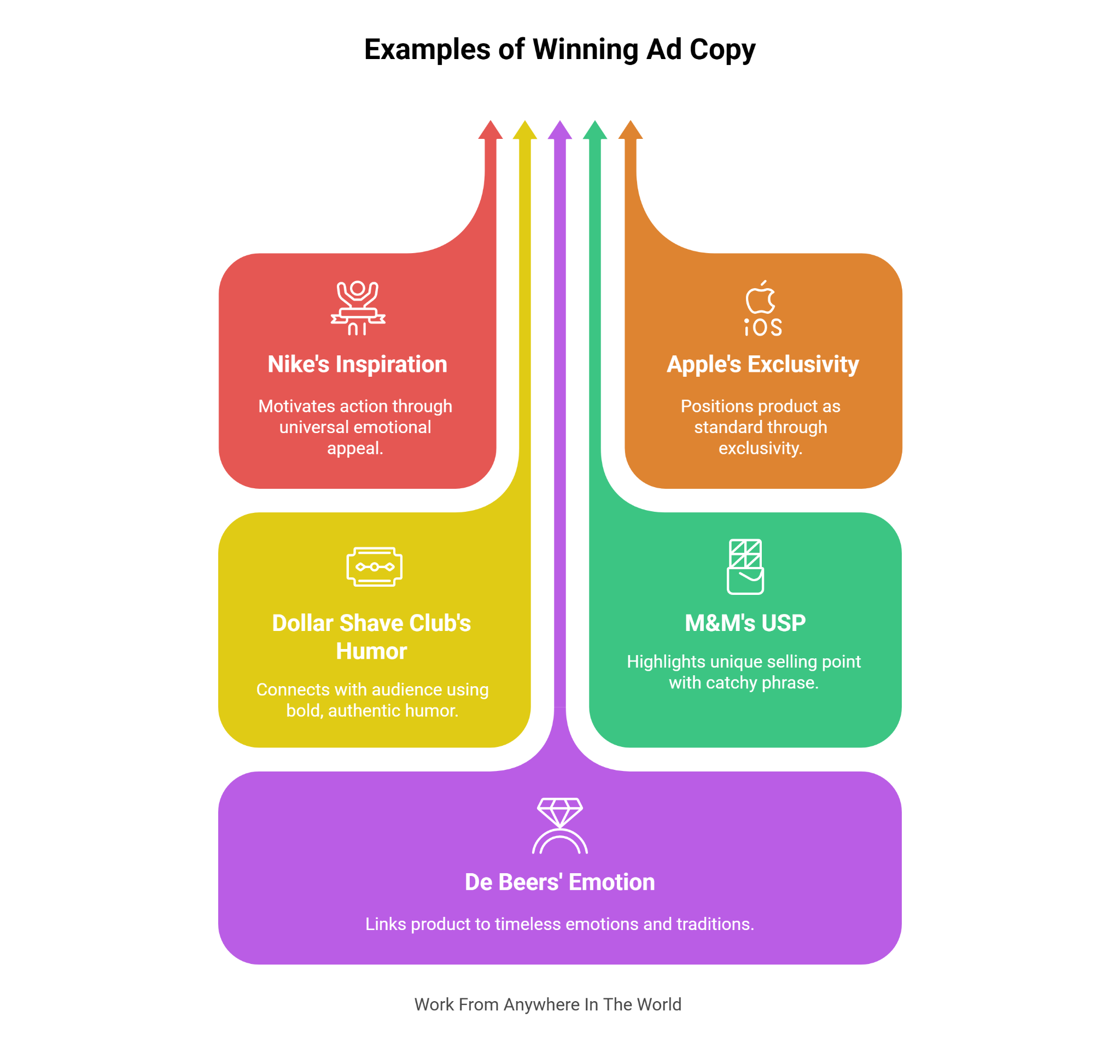
Conclusion
Although it takes time to become an expert at ad copy, anyone can write messages that actually convert with the correct techniques.
You can create advertisements that capture attention and motivate action by knowing your audience, emphasizing benefits, utilizing emotional triggers, and testing your copy.
Start applying these techniques today, and watch your results improve. Remember, practice makes perfect—and excellent ad copy can turn clicks into loyal customers.
I trust you enjoyed this article about How To Write Ad Copy That Sells. Please stay tuned for more articles. Take care!
JeannetteZ
Want to Learn How to Build Your Own Home-Based Online Business And Start Making Money Online From Your Comfortable Couch?
Try Wealthy Affiliate!
Your Opinion Is Important To Me
Do you have thoughts, ideas, or questions? I would love to hear from you. Please share your questions, experiences, remarks, and suggestions about How To Write Ad Copy That Sells in the comments below. You can also email me at Jeannette@WorkFromAnywhereInTheWorld.com.
Disclosure
This post may contain affiliate links. I earn from qualifying purchases as an Amazon Associate and through other affiliate programs. Please read my full affiliate disclosure.
You may also enjoy the following articles:
Wealthy Affiliate Coupons For Premium Memberships
Wealthy Affiliate Review – Scam or Legit? The Truth Exposed
An Insider Wealthy Affiliate Review
How To Write Articles For Magazines
The Ultimate On-Page SEO Guide


